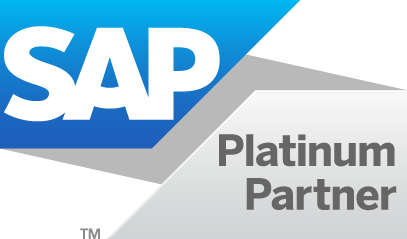According to a McKinsey Global Survey, COVID-19 has accelerated years of digitalisation into a span of a few months and many of these changes could be here for the long haul. In many ways, AI seems to be leading many of the advances in technology and in this age where data or technology is the new gold, we have to stay updated.
How COVID-19 has pushed companies over the technology tipping point—and transformed business forever
Almost overnight, companies around the world had to adapt to work from home. The new norm required the organization’s IT infrastructure and systems to support the remote working of the employees. The COVID-19 crisis seemingly provides a sudden glimpse into a future world such as telehealth, self-service insurance claims, and contactless shopping and delivery.
Playing it safe now, understandable as it might feel to do so, is often the worst option. Shortcomings in organizational culture are one of the main barriers to company success in the digital age. Although the digital age is providing companies with better means to develop a customer-centric organizational culture, this global pandemic brought them closer to it faster than they have planned. Now, it’s becoming a matter of survival!

“When you look back and see failure, you say, ‘It made me what I am!’ But looking forward, you think, ‘I don’t know what is going to happen and I don’t want to fail.’ The difficulty is that when you’re running an experiment, it’s forward-looking. We have to try extra hard to make it safe to fail.” – Ed Catmull of Pixar.
The COVID-19 crisis, however, has made experimentation both a necessity and an expectation. At the organizations that experimented with new digital technologies during the crisis, executives are twice as likely to report outsize revenue growth than those at other companies.
Companies must act boldly with tightly integrated strategies on multiple dimensions in their industries. This is to ensure their investments match the impact of the evolution on their economic performance.
How to act boldly?
1. New offerings
The organizations that are able to leverage things like design thinking and AI into their new offerings during a crisis will see a significant first-mover advantage.

Image source: MAQE
2. Reinvent your business model at its core
Organizations that are rapidly adopting AI tools and algorithms, as well as design thinking, and using those to redefine their business at scale have been outperforming their peers. Moreover, the companies becoming more powerful than ever with big data in a fast-evolving environment and determined to make fast, accurate reorientation compared with their peers.
3. Boldly evolve your business portfolio
Mergers and acquisitions (M&A) allow companies to gain talent and build capabilities, even as it offers access to new products, services, and solutions, and the new market and customer segments. The digital talent and capabilities were out of reach during normal times. But today, the valuations are down because of the crisis and its immediate aftermath. It’s time to pick up assets that were typically valued at multiples previously.

4 areas of intervention can help companies learn more quickly during the crisis
1. Quicken your data reviews, the steps:
- Start by evaluating the frequency with which you review the available data.
- You should be reviewing multiple sources of data on a weekly (or more frequent) basis to evaluate the shifting needs of your customers and business partners—as well as your performance.
- Look to your crisis nerve centre as a single source of truth for newly emerging data about your employees, your customers, your channel partners, your supply chains, and the ecosystems in which your company participates.
- Then turn to secure file-sharing technologies like Box and Zoom to remotely share and discuss insights from this faster pace of data review.
2. Factors to focus on as you more quickly learn about and adopt new technologies:
- Data security – Are you experiencing breaches as you move to remote working and data sharing?
- Scalability – Where are the breaks and crashes happening as most of your interactions with customers, employees, and business partners go virtual?
- Usability – How well will your new offerings stand up?
3. Test and learn
- Use automation and predictive analytics to quickly and effectively isolate difficulties.
- Standardize what you’re learning to accelerate projects by reducing confusion. Furthermore, this sets common digital tools that broad groups of people can use across core business processes.
Also Read: 5 Essential Software Tools To Run Your Business During Lockdown
How to learn while scaling?
Companies in crisis mode find themselves at a massive scale of new digital initiatives trial that comes with many challenges. But it also increases informed decision-making ability.
1. Observing interaction effects through scaled experimentation
Companies that have already invested in AI capabilities will find themselves significantly advantaged because they are no longer isolating one variable at a time. They can shift multiple variables simultaneously that decreases the degree of difficulty when it comes to interpreting the results.
2. Simplify and focus to avoid being overwhelmed
This is perhaps the first global crisis in which companies are in the position to collect and evaluate real-time data about their customers and what they are doing (or trying to do) during this time of forced virtualization.
3. Don’t go it alone
The more people or organizations that you add to the common solution space, the more quickly learning occurs and the faster the performance improves.
One way is to build or tap into platform-based talent markets that help organizations reallocate their labour resources quickly when priorities and directions shift. At the same time, help talented employees increase their rate of learning.
It’s recommended to include your channel partners, vendors, and suppliers as well. Chances are they will be more willing than ever to collaborate and share data and learnings. Such strong collaboration assures everyone’s collective survival.
Click here to read the full survey.














